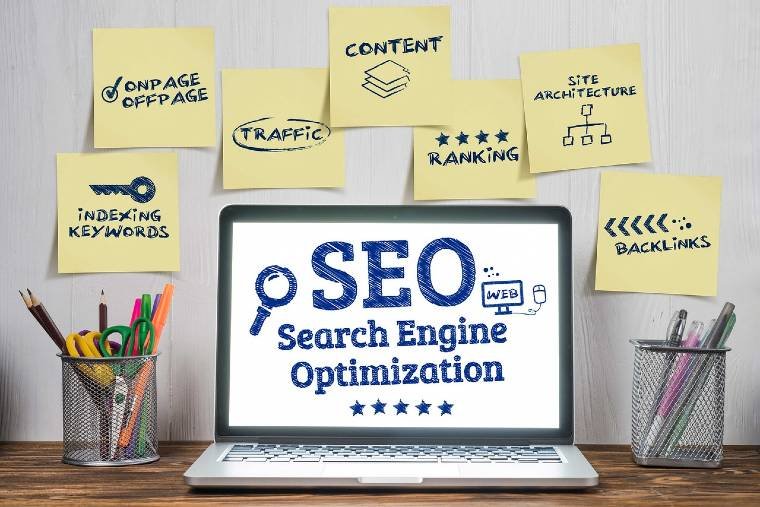Introduction
In today’s digital-first world, having a strong online presence is no longer optional—it’s essential for businesses, professionals, and entrepreneurs alike. Whether you’re a small business owner, a freelancer, or an established brand, your online presence determines how potential customers perceive you and engage with your offerings.
With millions of businesses competing for attention online, simply having a website or social media profile is not enough. You need a well-planned, multi-channel strategy to stand out, build trust, and drive conversions. This guide will walk you through the step-by-step process of building a strong online presence, covering everything from branding and website creation to SEO, social media, and analytics.
1. Understanding Online Presence: What It Means and Why It Matters
Before diving into strategies, it’s crucial to understand what an online presence is and why it plays a pivotal role in your success. Your online presence encompasses every digital touchpoint where users can find and interact with you. This includes your website, social media profiles, Google search results, online reviews, and more.
Why is Online Presence Important?
- Builds Credibility and Trust – A well-maintained online presence makes you look professional and reliable.
- Increases Visibility and Reach – The more visible you are online, the higher the chances of attracting potential customers.
- Enhances Customer Engagement – Engaging with your audience through various online platforms fosters relationships and loyalty.
- Boosts Conversions and Sales – The stronger your digital footprint, the more leads and sales you can generate.
Nike has mastered its online presence by using a combination of a well-optimized website, strong social media engagement, and strategic content marketing. As a result, it consistently ranks among the most recognized global brands.
2. Defining Your Brand Identity: Laying the Foundation
Your online presence starts with a clear and well-defined brand identity that reflects who you are and what you offer. A strong brand identity helps you stand out in a crowded market and makes you memorable to your audience.
What is Brand Identity?
Brand identity is the collection of visual and verbal elements that define how your brand is perceived by the audience. It includes your logo, color scheme, typography, brand voice, and messaging.

Steps to Define Your Brand Identity
Ensure Consistency Across All Platforms
Brand consistency is key to recognition and trust. Ensure that your website, social media, email communications, and marketing materials all reflect the same identity.
Starbucks maintains a uniform brand experience across its stores, packaging, and digital presence, strengthening its global image.
Identify Your Target Audience
Understanding your ideal customers is crucial. Ask yourself: Who are they? What problems do they face? Where do they spend time online? For instance, if your business caters to young professionals, LinkedIn and Instagram may be key platforms for engagement.
A brand like Glossier, which targets millennial and Gen Z consumers, crafts its identity around inclusivity and minimalistic beauty, aligning with its audience’s preferences.
Define Your Unique Selling Proposition (USP)
Your USP differentiates you from competitors. What do you offer that no one else does? Your USP should be clear in your branding, website messaging, and content strategy.
Airbnb, for example, built its brand around offering unique travel experiences rather than just accommodations.
Choose a Brand Name and Tagline
Your brand name should be memorable, relevant, and easy to spell. A strong tagline reinforces your brand mission.
Consider Apple’s tagline, Think Different—it encapsulates innovation and simplicity, which align with the brand’s core values.
Establish Your Brand’s Voice and Tone
Your brand’s voice should reflect its personality. Is your brand professional, casual, humorous, or authoritative?
Wendy’s social media presence is witty and sarcastic, which aligns well with its younger, social media-savvy audience. In contrast, IBM maintains a professional and informative tone, appealing to corporate clients.
Create a Visual Identity (Logo, Colors, Typography)
Your visual elements should be cohesive and recognizable. Choose colors and typography that evoke the right emotions. For example:
- Red (Coca-Cola, Netflix) conveys excitement and passion.
- Blue (Facebook, IBM) evokes trust and professionalism.
- Minimalist fonts (Google, Apple) suggest modernity and simplicity.
Craft Your Brand Messaging and Story
Your brand story should communicate your mission, vision, and values. Why did you start this business? What impact do you want to make?
Patagonia, for instance, incorporates sustainability into its brand messaging, appealing to eco-conscious consumers.
Ensure Consistency Across All Platforms
Brand consistency is key to recognition and trust. Ensure that your website, social media, email communications, and marketing materials all reflect the same identity.
Starbucks maintains a uniform brand experience across its stores, packaging, and digital presence, strengthening its global image.
By following these steps, you create a cohesive brand identity that resonates with your audience and strengthens your online presence.
3. Creating a Website: Your Digital Headquarters
The Importance of a Website
A website serves as the digital headquarters of your brand. It is often the first point of interaction for potential customers and plays a crucial role in shaping their perception of your business. Unlike social media platforms, which are subject to algorithm changes and limitations, a website gives you complete control over your content, branding, and user experience.
Why a Website is Essential for Your Online Presence
- Credibility and Professionalism – A professional website instills trust and legitimacy.
- 24/7 Accessibility – Unlike physical stores, a website allows customers to access information and make purchases anytime.
- Better SEO and Discoverability – A well-optimized website improves search rankings, driving organic traffic.
- Conversion Optimization – A website enables businesses to capture leads, process payments, and facilitate bookings.
- Marketing Integration – Your website acts as the central hub for content marketing, social media, and paid advertising campaigns.
Amazon’s website is structured for seamless navigation, quick load times, and personalized recommendations, enhancing the shopping experience.
Key Elements of a Strong Website
| Element | Importance |
|---|---|
| Domain Name | Keep it short, relevant, and easy to remember |
| Hosting | Choose reliable hosting for speed and uptime |
| Design & UX | Simple, clean, and intuitive navigation |
| Mobile-Friendliness | Optimized for smartphones and tablets |
| SEO Optimization | Helps rank higher on search engines |
| Content Strategy | Provides value to visitors and builds engagement |
| Call-to-Action (CTA) | Guides users toward key actions (buy, subscribe, contact) |
A well-designed website with these elements ensures that visitors have a seamless and engaging experience, increasing the likelihood of conversions and brand loyalty.
4. Search Engine Optimization (SEO): Enhancing Visibility

Why SEO Matters
A great website is ineffective if no one can find it—this is where SEO comes in. SEO (Search Engine Optimization) is the process of optimizing your website to rank higher in search engine results, thereby increasing your visibility and attracting organic traffic. Proper SEO strategies help businesses drive targeted visitors, improve credibility, and ultimately boost conversions.
SEO Types: On-Page and Off-Page SEO
SEO is broadly classified into two categories:
- On-Page SEO – Focuses on optimizing elements within your website, such as content, HTML source code, and internal linking.
- Off-Page SEO – Refers to external factors like backlinks, social media presence, and domain authority that influence your website’s ranking.
Steps for Effective SEO
a. Keyword Research
Keyword research is the foundation of effective SEO. Identifying and targeting the right keywords ensures that your website ranks for relevant search queries.
b. Optimizing Website Structure, Content, and Meta Descriptions
A well-optimized website improves user experience and search engine rankings.
c. Building Backlinks and Domain Authority
Backlinks (links from other websites pointing to yours) are crucial for improving domain authority and search rankings.
d. The Role of Technical SEO
Technical SEO involves backend optimizations that enhance website performance, including:
- Site Speed Optimization – Faster loading websites rank higher.
- Mobile Friendliness – Google prioritizes mobile-responsive sites.
- Secure HTTPS Protocol – Secure websites gain trust and better rankings.
By implementing these SEO strategies, businesses can improve their online visibility, attract organic traffic, and stay ahead of competitors.
5. Leveraging Social Media: Expanding Your Reach
Social media platforms act as powerful tools to engage, attract, and convert your audience.
In today’s digital landscape, social media is a crucial component of any online presence strategy. It provides businesses and individuals with a direct way to connect with their target audience, build relationships, and establish brand authority. However, simply being on social media isn’t enough—you need a well-thought-out approach to make the most of these platforms.

Choosing the Right Social Media Platforms Based on Your Audience
Not all social media platforms are created equal, and choosing the right ones for your brand is essential for success. Each platform caters to different demographics, interests, and engagement styles.
- Facebook – Best for community engagement, customer support, and paid advertising. Ideal for businesses targeting a broad audience, including millennials and Gen X.
- Instagram – Great for visually driven brands like fashion, food, travel, and lifestyle. Stories, reels, and influencer marketing work well here.
- LinkedIn – Ideal for B2B companies, professional networking, and content marketing. Thought leadership and industry insights thrive on this platform.
- Twitter (X) – Useful for real-time updates, customer interaction, and trending conversations. Best for brands involved in news, tech, and entertainment.
- TikTok – Excellent for brands targeting Gen Z with short, engaging, and creative video content.
- Pinterest – Suitable for brands in design, DIY, and lifestyle niches. Works well for product discovery and inspiration-driven audiences.
Effectively Leveraging Social Media
- Creating and Maintaining a Content Calendar
A structured content calendar ensures consistency, helps manage campaigns, and prevents last-minute content creation stress.
- Engaging with Followers Through Comments, Messages, and Live Interactions
Social media is not just about broadcasting messages—it’s about fostering engagement and relationships. - Utilizing Social Media Advertising for Greater Reach.
While organic reach is valuable, paid advertising on social media can amplify your impact and help you reach a wider audience.
By implementing these strategies, businesses can harness the power of social media to engage audiences, enhance brand awareness, and drive conversions effectively.
6. Content Marketing: Establishing Authority and Trust
Content is the backbone of any online presence—it builds authority, engages audiences, and drives traffic.
Content marketing plays a pivotal role in shaping how audiences perceive your brand. It allows businesses to provide value to their audience while subtly promoting their products or services. High-quality content can position your brand as an industry leader, drive organic traffic, and foster trust among potential customers.

Various Content Avenues You Can Utilize
- Blogging for Thought Leadership
Blogs remain one of the most effective content marketing strategies. A well-maintained blog establishes credibility, improves SEO rankings, and attracts a steady stream of organic visitors. - Video Marketing and Its Growing Importance
Video content has exploded in popularity due to its engaging nature. Platforms like YouTube, Instagram Reels, and TikTok have made it easier for businesses to connect with audiences through visual storytelling. - Creating High-Value Resources (eBooks, Whitepapers, Guides)
Long-form content like eBooks and whitepapers allows businesses to provide in-depth insights while capturing leads through gated content. - Leveraging Email Marketing for Lead Nurturing
Email marketing remains one of the most effective ways to engage leads and convert them into loyal customers.
By leveraging content marketing effectively, businesses can build trust, engage audiences, and drive sustainable growth.
7. Online Reputation Management: Maintaining Credibility
Your online reputation can make or break your business, so actively managing it is key.
In the digital era, where customers heavily rely on online reviews and brand perception, maintaining a positive reputation is crucial for business success. A single negative review or viral complaint can impact trust and conversions, making proactive reputation management a necessity.
Monitoring Online Reviews and Feedback
Consistently tracking customer feedback across multiple platforms helps businesses address concerns, improve services, and maintain a favorable brand image.
Where to Monitor Feedback:
- Google Reviews: The most influential platform affecting local search rankings and customer trust.
- Social Media Mentions: Comments, shares, and direct messages on platforms like Facebook, Instagram, and Twitter (X) contribute to brand perception.
- Third-Party Review Sites: Platforms like Yelp, Trustpilot, and industry-specific sites can shape a company’s reputation.
- E-commerce & Marketplace Reviews: Amazon, eBay, and Google Shopping reviews affect online purchasing decisions.
Encouraging Positive Testimonials and Handling Negative Feedback Professionally
Customer feedback can serve as a powerful marketing tool when managed strategically.
Using Tools Like Google Alerts and Social Listening for Brand Mentions
Proactive monitoring of online discussions about your brand helps in addressing issues before they escalate.
Crisis Management & Damage Control
Even with careful reputation management, unforeseen crises can arise. A well-prepared crisis response plan helps mitigate damage.
8. Analytics and Performance Tracking: Measuring Success
Tracking performance helps you understand what works, what doesn’t, and how to optimize your strategy.
Building a strong online presence is not just about launching a website, engaging on social media, or producing content—it’s about consistently analyzing performance data to refine and improve your strategy. Without tracking key metrics, businesses operate blindly, wasting time and resources on ineffective tactics.
Analytics and performance tracking allow you to:
- Identify high-performing content, campaigns, and audience segments.
- Pinpoint weaknesses in your strategy and areas needing improvement.
- Make data-driven decisions to optimize your online presence.

Using Google Analytics and Search Console
Google provides free and powerful tools—Google Analytics (GA) and Google Search Console (GSC)—to help businesses track website performance.
Google Analytics: Understanding Website Behavior
Google Analytics offers deep insights into user behavior, allowing businesses to measure traffic sources, engagement, conversions, and more.
Example of Google Analytics in Action:
A small e-commerce business discovers that 70% of its traffic comes from mobile users, yet the conversion rate on mobile is significantly lower than desktop. By using this data, they optimize their mobile checkout process, leading to increased sales.
Google Search Console: Monitoring SEO Performance
Google Search Console (GSC) helps businesses analyze their search presence and troubleshoot SEO issues.
Example of Google Search Console in Action:
A SaaS company notices that one of their blog posts ranks on the second page of Google for a valuable keyword. By optimizing the content, adding structured data, and improving internal linking, they move it to the first page, doubling organic traffic.
Tracking Social Media Engagement and Website Traffic
Understanding audience behavior on social media helps businesses optimize content, increase engagement, and drive traffic to their websites.
Example of Social Media Analytics in Action:
A fitness influencer notices that Instagram Reels generate 3x more engagement than static posts. By shifting content strategy to focus on short-form videos, they increase their reach and follower count significantly.
Final Thoughts on Analytics & Performance Tracking
Success in the digital world is driven by data, not guesswork. By leveraging tools like
Google Analytics, Search Console, and social media insights, businesses can make informed decisions, refine their strategies, and continuously improve their online presence.
9. Paid Advertising: Boosting Your Online Presence Quickly
While organic growth takes time, paid advertising can accelerate visibility and lead generation.
Paid advertising allows businesses to reach a larger audience quickly and efficiently. Unlike organic methods, paid campaigns can drive immediate traffic, boost conversions, and provide measurable ROI.
Introduction to PPC Advertising (Google Ads, Facebook Ads)
Pay-per-click (PPC) advertising enables businesses to display targeted ads across search engines and social media platforms.
- Google Ads: Displays ads on Google search results and partner websites.
- Facebook & Instagram Ads: Offers detailed targeting based on user behavior and demographics.
- LinkedIn Ads: Effective for B2B marketing and professional outreach.
Setting Up Effective Ad Campaigns
- Define clear objectives (brand awareness, lead generation, sales).
- Conduct audience research and segmentation.
- Create compelling ad copy and visuals.
- Set budgets and bidding strategies.
Understanding Ad Performance Metrics and Optimization
- Click-through rate (CTR)
- Conversion rate
- Return on Ad Spend (ROAS)
By analyzing these metrics, businesses can refine their ad strategies for better performance and higher ROI.
10. The Future of Online Presence: Trends to Watch
The digital landscape is constantly evolving—staying ahead of trends will keep you competitive.
The Rise of AI in Digital Marketing
Artificial Intelligence (AI) is reshaping digital marketing through automation, data analysis, and personalized recommendations. AI-powered tools like chatbots, content generation algorithms, and predictive analytics enable businesses to enhance customer experience and improve decision-making.
- AI-driven customer service enhances response time and efficiency.
- Predictive analytics helps brands anticipate user behavior and optimize marketing strategies.
- AI-powered content tools generate personalized recommendations for users.
Voice Search Optimization
With the rise of smart assistants like Alexa, Siri, and Google Assistant, optimizing for voice search is becoming essential. Businesses must adapt their SEO strategies to accommodate conversational queries.
- Use natural language and long-tail keywords.
- Optimize for local search and featured snippets.
- Structure content to answer questions concisely.
The Role of Personalization in User Experience
Personalization is key to building a strong online presence. Consumers expect tailored experiences, from personalized email recommendations to AI-driven product suggestions.
- Data-driven personalization increases engagement and conversions.
- Businesses should leverage customer insights to offer relevant content.
- Dynamic website experiences adapt to user preferences in real-time.
Conclusion
“Building a strong online presence is a continuous process, but with a well-planned strategy, you can establish credibility, attract customers, and grow your brand in the digital world.”
Recap Key Takeaways
- A strong online presence requires a mix of organic and paid strategies.
- Leveraging AI, personalization, and voice search optimization ensures future readiness.
- Social media, content marketing, and paid ads work together to maximize reach and engagement.
Next Steps
- Start implementing these strategies today.
- Stay updated on digital marketing trends.
- Explore additional resources or schedule a consultation to refine your approach.
FAQs
- Why is an online presence important for businesses?
A strong online presence helps build brand credibility, attract customers, and drive business growth through digital marketing. - How often should I post on social media?
Posting frequency depends on the platform, but consistency is key. For example, Instagram and Twitter require daily updates, while LinkedIn works well with weekly posts. - How can small businesses compete with larger brands online?
By focusing on niche marketing, personalized content, SEO, and strategic paid advertising, small businesses can effectively compete with larger brands.

